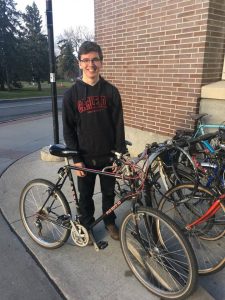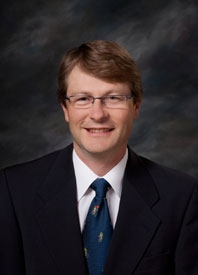By: Brenna Mackay
Each morning, Joey Zurakowski takes his bike out of his garage, throws on his helmet and heads off to school. His ten minute cycling commute from Old Ottawa South to Carleton University beats waiting upwards of 30 minutes for an unreliable, inconveniently located bus, he says.
Zurakowski is not alone in his choice. As more and more people in Ottawa ride their bikes to school, work and running errands, there has been a movement to make the city more bike-friendly and the roads safer, particularly in central areas located near the downtown core.
“It’s very convenient and there’s been a push to make biking more accessible and easier to do on big roads,” he explains. “As well, everyone is concerned about the environment so it’s an easy way to reduce your footprint.”

Source: Brenna Mackay
According to the 2011 Household Survey, the Capital Ward is home largest population of individuals who cite cycling as their main mode of transportation. The Capital Ward consists of neighbourhoods such as the Glebe, Old Ottawa South, Old Ottawa East, Riverside and Heron Park. The largest pockets live in Rideau Gardens, with 345 devoted cyclists, and the Glebe, with 340. In total, there are 10,800 or a little over one percent of the population of Ottawa who ride their bike to and from work. Additionally, Ottawa also has a very well established recreational bike network.
Distribution of Cycling as Primary Mode of Transportation
Created with data obtained from the 2011 National Household Survey
Zurakowski says while he generally feels safe riding his bicycle in most areas in the city, he tends to avoids major roads such as Bronson and specifically Bank.
“The fact that cars can park on the side of the road so if you’re riding your bike, you have to be in between the moving car and the parked car, I’m not too keen on that,” explains Zurakowski. “As well as Lansdowne Bridge, people just sail over that.”
David Chernushenko, the Councillor of the Capital ward, is an avid cyclist and has been an advocate for making the roads safer for bikes and cars. He explains that the draft 2017 budget has the city investing the most amount of money ever into making the city more accessible for cyclists.
A recent addition to the city’s transportation system, the bi-directional bike way on O’Connor, has made headlines after three cyclists were struck by cars within the first 20 days of opening. This has raised concerns surrounding the safety of the infrastructure design.
Chernushenko is defending the design and the decision to implement this type of bike lane.
“There’s nothing wrong with the lane’s design,” he adds. “It’s different and people have to familiarize themselves with it, both cyclist and driver.”

Source: City of Ottawa
He says O’Connor Street was the only way the city could fit in a north-south route through downtown, and many other cities across the world have two way bike lanes that have been successful.
“Above all, it’s about speed and being alert,” says Chernushenko.
He says he hopes that these incidences will not discourage the community from riding their bikes, as accidents are rare and the benefits greatly outweigh the risks.
“People don’t stop driving because they hear about a car accident,” he concludes. “To me, it’s liberty and it’s freedom. It’s the most pleasant way to get around and enjoy a city.”
Zurakowski agrees that the bike way is a positive addition, but says it will take time for drivers to adapt.
“It’s forward thinking and encourages people to ride bikes,” says Zurakowski. “But like any bike lane, you have to make cars very aware that it’s there, especially because we have had incidents.”
Looking forward, Zurakowski says he doesn’t see himself stopping riding his bike anytime soon.
“I definitely see myself continuing to ride my bike in the future, even if I’m living in another city. I don’t like sitting in traffic and it shaves off so much time,” he says.
